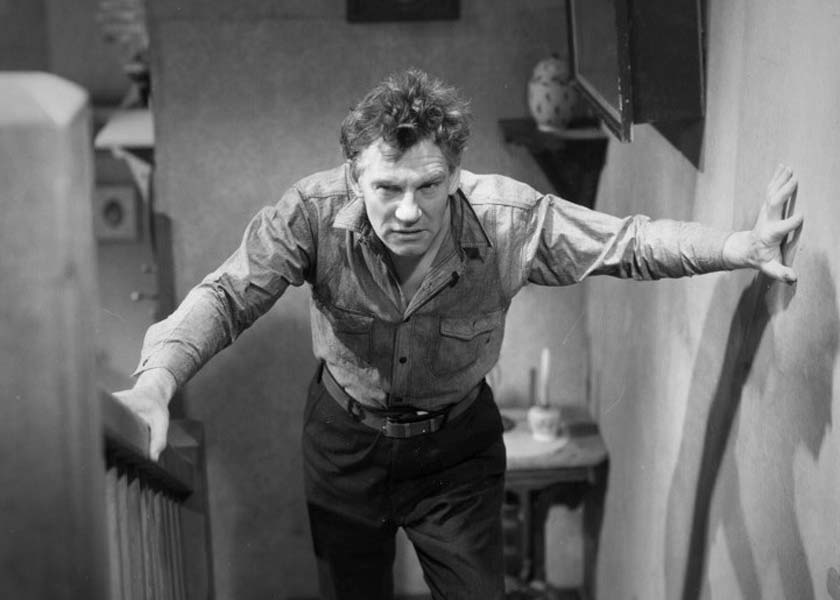Synopsis
Widowed fisherman Seth Law (Huston) dominates his sensitive son, Matt (Montgomery). Needing a permanent domestic, Seth sends for a mail order bride. Unexpectedly, the bride turns out to be a pretty young woman, Ruth Evans (Chandler). After the wedding ceremony, Matt realizes that his brutal father cannot take the inexperienced and frightened young woman into his bed. A fight between father and son leaves Seth crippled. The guilt ridden young people take care of the callous and domineering father.
One stormy night, Ruth and Matt decide to run away on the fishing boat. In the storm, the boat is swept out to sea with Ruth on board. Matt and Seth, who is lashed to the seat of a rowboat, attempt to rescue her. Ruth is clinging to the side of the fishing boat, and as father and son row toward her, Matt leaps into the tempestuous sea and swims to her. He holds her above the waves. He looks for his father in the rowboat and realizes that the boat has capsized in the rough surf. His father has drowned. On a later day, the young people, standing at the edge of the sea, gaze at each other in peace.
Discussion
The transition from silent to sound films was still taking place in 1931. Many films made in that year are slow, stilted, and poorly acted. Many silent film directors were having difficulty adjusting to the changes in approach required to put together a good talking picture. This film shows that director William Wyler (The Best Years of Our Lives) had little difficulty adapting to sound. The pacing of A House Divided is smooth, the dialogue confidently spoken, and the acting is sharp. Of course, it helps that the lead actor is Walter Houston who gives a powerful performance as the brutal and lusty fisherman.
Gritty and sexually charged, A House Divided exemplifies Pre-Code
Hollywood moviemaking. Established in 1930, the Motion Picture Producion Code was
a set of voluntary guidelines to restrict profanity, blasphemy, sexuality, and
many other forms of immorality
that could be portrayed on screen. The Code
was not enforced until mid-1934, leaving a brief and fascinating few years of
largely uninhibitied filmmaking at the beginning of the sound era. Other Pre-Code
films include
The Bachelor Father,
Blondie of the Follies, Employee's Entrance, Hat Check Girl,
The Kiss Before the Mirror,
Ladies They Talk About, Laughter in Hell, The Maltese Falcon, Safe in Hell, She Had to Say Yes and
Ten Cents a Dance.

